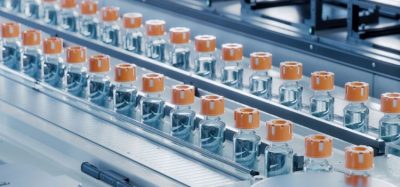General chapter on the rFC test adopted by the European Pharmacopoeia Commission
Posted: 20 February 2020 | Johannes Reich (Microcoat), Sven Deutschmann (Roche Diagnostics GmbH) | 2 comments
The recombinant Factor C (rFC) assay has been developed to help alleviate the pressures of a growing demand for the Limulus amoebocyte lysate (LAL) assay. Here, Sven Deutschmann and Johannes Reich discuss the advantages of rFC and its recent recognition by the European Pharmacopoeia as an alternative endotoxin test.


IN NOVEMBER 2019, the European Pharmacopoeia (Ph. Eur.) Commission adopted 13 new monographs and four new general chapters. Among the new chapters is Chapter 2.6.32, titled ‘Test for bacterial endotoxins using recombinant factor C (2.6.32)’. This will be published in the coming weeks in Ph. Eur. Supplement 10.3 and available on the European Directorate for the Quality of Medicines (EDQM) website. The chapter will be effective at the start of next year (1 January 2021).
In January 2019, the Ph. Eur. launched a public consultation for preparing the new general chapter and was the first pharmacopoeia to refer to the rFC test, which they did in chapter 5.1.10, ‘Guidelines for using the test for bacterial endotoxins.’
“As stated in the General Notices, the test methods given in monographs and general chapters have been validated in accordance with accepted scientific practice and current recommendations on analytical validation. In consequence, the methods described in general chapters 2.6.14. Bacterial endotoxins, 2.6.30. Monocyte-activation test and 2.6.32. Test for bacterial endotoxins using recombinant factor C therefore do not have to be re-validated per se, other than in consideration of their use for a specific substance or product in a specific analytical environment.”
Thus, allowing the recombinant protein to be used as an alternative to the Limulus amoebocyte lysate assay (LAL assay). For now, only tests based on the fluorometric test method are described in the new chapter as these are the rFC kits currently available on the European market and most of the available scientific data are based on this method.
rFC advantages – improvements on the LAL paradigm
The benefits from switching from LAL to rFC-based bacterial endotoxin tests has been clearly identified by different regulatory bodies”
The advantages of the rFC test revolve around the newest paradigm change; the difficulty associated with sustaining and improving modern test methods in light of horseshoe crab population diminishment.
The rFC test is recognised as possessing several advantages to the LAL assay, including (a) reproducibility/quality, (b) sustainability/ availability and (c) specificity. These advantages will be briefly outlined.
Reproducibility/quality
Classical LAL assays are sourced from horseshoe crabs and thus underlie natural variability from lot to lot. Production lot rFC to production lot rFC has been shown to maintain its quality attributes in terms of standard curve values and parameters obtained test after test. The biotechnological production of rFC allows users to source a consistent product that is not subject to the variables of naturally harvested proteins. This is important for reproducible and reliable testing. Product variability that occurs with pooled batches of harvested animals includes age, gender, size, environment, etc. Global companies prefer uniformity and standardised platforms as applied across global supply chains. Thus, a recombinant produced product can meet this criterion.
Sustainability/availability


The global availability of LAL has been met to date in a supply chain that depends upon geographically isolated production and subsequent transatlantic export of LAL from the US east coast. On a smaller scale, the use of tachypleus amebocyte lysate (TAL) produced locally in Asia has also been used. The “at will” production of a recombinant reagent can help meet the logistical demands of global supply chains.
Specificity
In contrast to LAL, rFC does not contain Factor G, which is the beta-glucan zymogen (biosensor for beta-glucan). Beta-glucan has been found commonly as a breakdown product of cellulosic filters in manufacturing processes, as well as a ubiquitous contaminant of natural waters (lakes, rivers and sewers) as a by-product of plant and fungal growth. The activation of LAL by beta-glucans is referred to as a “false positive”. Even when masked with beta-glucan blocking buffer, it has been shown to affect the variability of LAL assay results. The lack of false positive results from rFC testing is another benefit and removes a confounding element of LAL detection.
Over recent decades, countless scientific articles have been published showing reliable and sustainable detection of bacterial endotoxin using rFC-based assays. In comparison, the performance of equivalency of the rFC and LAL methods has been widely demonstrated and different pharmacopoeia are beginning to include the rFC in their official texts.
Taken together, the benefits from switching from LAL to rFC-based bacterial endotoxin tests has been clearly identified by the different regulatory bodies. The European Pharmacopoeia will publish a new General Chapter, titled: Test for bacterial endotoxins using recombinant factor C (2.6.32) in July 2020. Today, in the US, a draft revision of the USP <85> ‘Bacterial Endotoxin Test’ including the description of both methods, rFC and LAL, was included to solicit user comments until December 2019. In Asia Pacific, the Japanese and Chinese pharmacopoeia have begun the same approach to include the rFC in the next release.
About the authors




Issue
Related topics
Analytical techniques, Assays, Endotoxin, Endotoxin Detection, QA/QC










This is an interesting article as it sights issues around the use of the current horseshoe crab based assay and purport to show the rFC assay described, as a superior method. Whilst there is no doubt the use of horseshoe crabs to provide the raw material for the Bacterial Endotoxin Test (BET) in Asia has contributed along with pollution and other human pressures to threatened status, this not the same situation for the North American horseshoe crab Limulus polyphemus. It must be remembered that horseshoe crabs harvested for the biomedical industry are done so by companies licensed by the US State Fish and Wildlife Services. Manufacturers of this product do so under strict FDA licensing. These US companies have been ensuring the careful harvesting of this valuable resource for many years through a catch and release programme. Sustainability initiatives have been set up in the US for some time to help ensure the future of this natural resource. Some of these have recently been transferred over to Asia to help them with the Asian Horseshoe crabs population in their regions. The current position in the US is that the horseshoe crab is not under threat and that the populations on the whole are stable for most areas where they are found and used for LAL manufacture. In Massachusetts, the Massachusetts Division of Marine Fisheries (DMF) has been conducting a spring and autumn survey of Horseshoe crab populations for 40 years. In the past 5-6 years there has been a marked increase in numbers recorded by the DMF with rises not seen in the entire 40 years of the survey. This is directly opposed to the fake news of horseshoe crab decline being promoted by some organisations.
The fact that US companies who provide the US and European BET reagents are FDA licensed also raises another question highlighted in this article. All LAL is manufactured in a strict cGMP environment. That means that these products are manufactured to the same high standards that pharmaceuticals such as drugs for injection are made. This ensures a very high degree of quality and traceability of manufacture. rFC reagents have no such stipulation and as such could, with knowhow be made anywhere under any conditions and with no formal quality control. The new monograph does not suitably address this quality issue. How does the user discern that these products are truly consistent and of a purity and quality that is required to provide accurate and repeatable testing results that are claimed by the authors?
In truth the articles claim that as LAL is derived from pooled materials from a population of crabs of various ages and conditions, does mean that LAL varies. This however is addressed in the release process where the data on each batch of reagent is reviewed and under the FDA license release for use. To add to this strict release process, the BET monograph ensures that any variability from batch to batch is dealt with through reagent qualification and acceptance criteria that the individual laboratories using the assay have to follow. The claim that it is less reliable due to variability is just not true.
The reactivity of LAL has long been understood. Beta Glucan contamination in pharmaceuticals is rare. Its presence in a product being tested will actually more likely result in the failure of the product when tested with LAL, stopping its release and may ultimately require an “out of specification” investigation which could lead to improvements in the manufacturing process. The presence of Beta Glucan could indicate that there is a manufacturing issue and so a simple test by using a glucan blocker will confirm this and help the user to determine this. rFC does not allow for this.
No one disputes that rFC does not have its place in detection of bacterial endotoxin, but the reality is that the BET assay, using natural LAL has been performed for over 40 years and provides a safe, reliable and effective way to ensure the safety of drugs and medical devices. The up and coming changes that are being adopted by the industry are welcome, but remember that rFC is not the panacea of all ills and that there has been concerns around its ability to detect all natural endotoxin with evidence of underreporting in the literature. Considered thought is needed before making the change from the traditional LAL to rFC and care and due diligence should be adopted. The user should be sure of the quality of the rFC product they intend to use. They should also understand the validation requirements for a successful transition to rFC. A simple transfer to the assay should be risk assessed and the expectations from your licensing authorities may require that the validation of accuracy, precision, repeatability, sensitivity and specificity are determined. Additionally as this monograph is a European document, those looking to release product in North America market and elsewhere in the world, may still be required to use the traditional natural LAL reagent for release. All of this discussion revolves around patient safety. It is paramount to why this assay is used and should be considered throughout as a balanced approach to obtaining an endotoxin free product to the patient.
Mark Childs
Thanks for this very comprehensible summary of the new rFC method described in Ph. Eur.
Finally, we will be able to have a good alternative method to the LAL and with this – and that is the most important point – we will reduce the pressure on the Limulus and Tachypleus populations.
I just hope that the industry will implement the method as soon as possible …